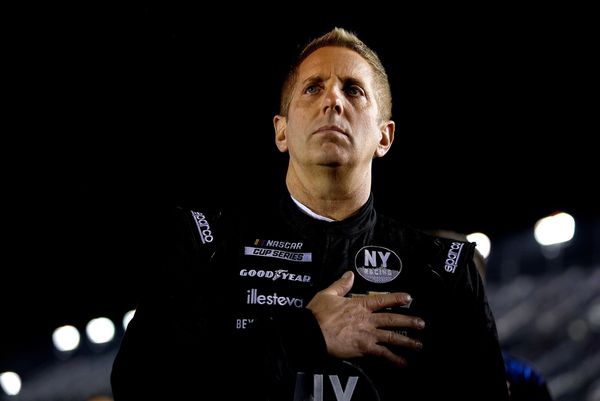The London theatre scene was all abuzz in January 2024 when two different star-studded West End productions of the ancient Greek tragedy Oedipus were announced within minutes of each other.
The first production of the Sophocles tragedy, adapted and directed by Robert Icke and starring Mark Strong and Leslie Manville, ran from October 2024 to January 2025, with a Broadway transfer to New York’s Roundabout Theatre Company planned for this autumn.
The second – which closes at the end of this month – opened weeks later at the Old Vic in a version by Ella Hickson, co-directed by Hofesh Shechter and Matthew Warchus, and starring Rami Malek and Indira Varma.
Historically, ancient Greek tragedies were retellings of ancient myths, performed in ways that encouraged the audience to reflect upon an old story in a new way. Two London productions of Oedipus might seem like overkill, but they actually demonstrate the versatility of the tragic form.
Looking for something good? Cut through the noise with a carefully curated selection of the latest releases, live events and exhibitions, straight to your inbox every fortnight, on Fridays. Sign up here.
Both productions rework the myth, allowing contemporary audiences to consider different perspectives on the play’s themes of power and knowledge.
One of the defining aspects of the ancient Greek tragedy is the chorus. Originally they performed in the orchestra of an ancient theatre – the space between the actors and the audience. Their performance of odes was in song and dance form, and the content might reflect upon the play’s events from their perspective, provide background that was either directly or indirectly related to the plot, or spur on the action of the play.
In Oedipus, the chorus is comprised of citizens of Thebes. The city is suffering from a terrible curse and Oedipus, the king, takes it upon himself to rectify this by following the advice of the gods to discover and punish the murderer of the previous king, Laius.
The chorus first enters singing – and dancing – about the disasters the people have been facing and prays for their end. For the rest of the play, from the foot of the palace, the chorus observes Oedipus’s investigation, horrific discovery and the piteous aftermath for his family.
The treatment of the role of the chorus in these two West End productions are essential to the different meanings they make and how they invite audiences to reflect upon the myth in relation to our own world.
In the Icke adaptation, Oedipus is with his family (wife Jocasta, mother Merope, brother-in-law Creon and three adult children Antigone, Polynices and Eteocles) at his campaign headquarters on the evening of the election.
In this version the challenge the city faces is governmental corruption. Icke has included more family members than are in Sophocles’s original text and cut the role of the chorus entirely. Its exclusion means the governmental corruption is seen almost entirely from the point of view of this political family.
The only perspective we get from the citizens is an opening video sequence as Oedipus is interviewed by the press, and the frequent election result updates. The people elect Oedipus. They want what he promises – an end of governmental corruption.
Icke’s Oedipus strives to do the right thing and break from the string of corrupt, deceitful, narcissistic politicians who have been plaguing the city. The play thereby draws contemporary connections to “draining the swamp” and the “fake news” accusations of Donald Trump.
Without reflections from the people (the chorus), the play becomes a personal drama about the family’s interests and public image. Oedipus and Jocasta’s grisly ends are entirely about their personal horror at the discovery they have made – that she is actually his mother.
There is no reflection on how the play’s ending relates to the ongoing trouble faced by the citizens. In this version of events the final impression feels pessimistic – even when leaders try to do the right thing, the system ensures that they will fail.
In the Old Vic production, the play is set in a Thebes that is suffering from extreme drought (likely alluding to the climate crisis). In Hickson’s adaptation, the chorus remains, but their words have been removed. Only their dance is performed between the scenes of the actors.
This is not to say that the Sophocles text has been “translated” into movement by Shechter, but rather that the historic function of the chorus (to contemplate, to reflect, to spur on) remains by means of what is communicated in dance – which, according to the Guardian’s theatre critic David Jays becomes “the irresistible core of the tragedy”.
In the play’s script, each scene ends with the deceptively simple word: “dance”. In performance, Oedipus’ investigation into what is causing the drought, contemplation of prophecies and public speeches to the people of Thebes are all interspersed with Shechter’s evocative choreography. We see their suffering, we see their prayers, we see their perseverance. Their needs never fade into the background but remain the consistent pulse of the play.
In this version, when Oedipus has his moment of revelation, the rain comes and the people dance in it. This moment imparts impressions of renewed faith, solidarity, fruitfulness, pride, rebirth and life continuing.
Oedipus enters having blinded himself, not out of personal horror, but in order to cleanse the city and ensure its continued godly favour. In contrast to the Icke production, Schechter and Warchus’s version – though still tragic – is ultimately hopeful.
The leader has taken responsibility for what they have done and put the needs of the people over his own ambitions and desires. The last moment is not Oedipus’s. It is the chorus’s – and we watch them dance.
Will Shüler does not work for, consult, own shares in or receive funding from any company or organisation that would benefit from this article, and has disclosed no relevant affiliations beyond their academic appointment.
This article was originally published on The Conversation. Read the original article.







